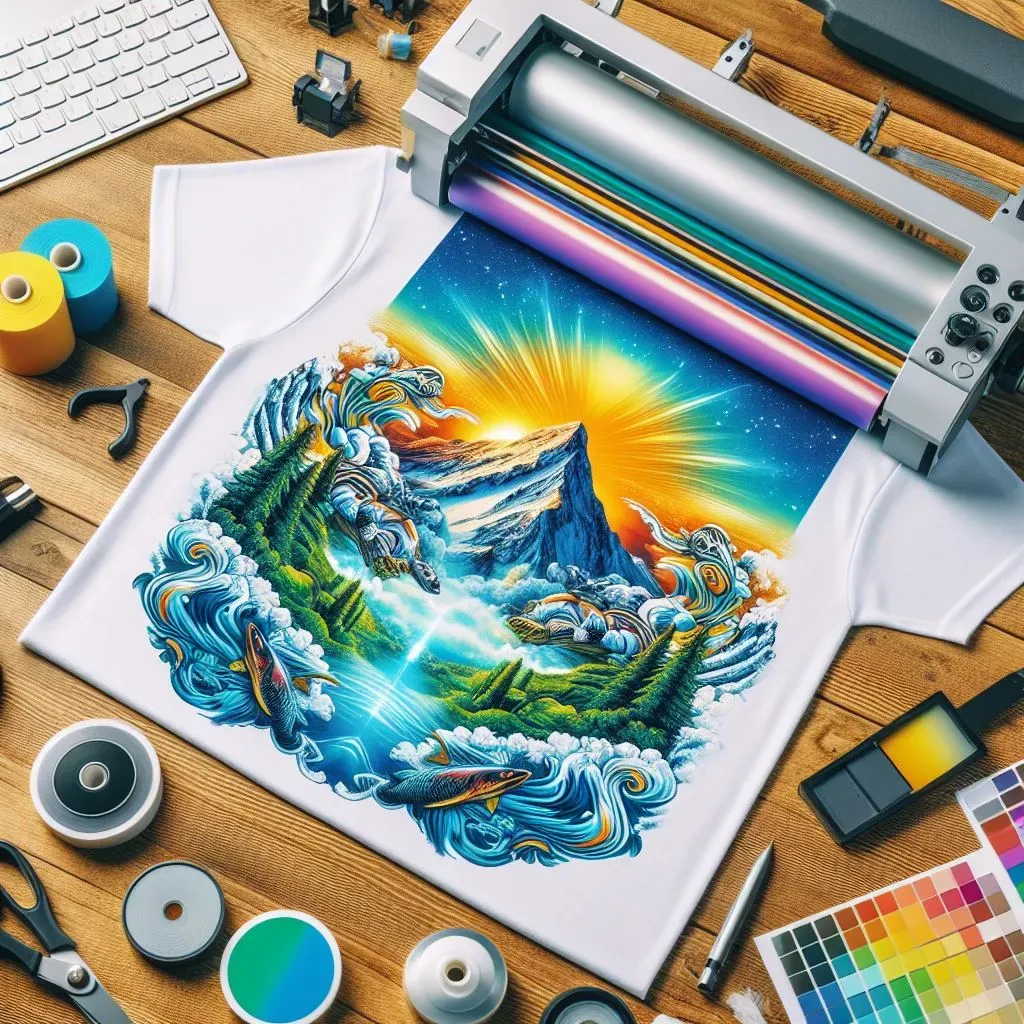If you’re venturing into the world of Direct to Film (DTF) transfers, it’s crucial to recognize the **common mistakes to avoid when using DTF transfers** that can hinder your success. Many users underestimate the importance of proper heat press settings, leading to inadequate adhesive bonding or damage to the fabric. Additionally, neglecting color management in DTF can result in designs that fail to meet expectations, while choosing low-quality DTF film can significantly compromise the durability of your prints. Post-application care for DTF transfers is another critical aspect often overlooked, which can lead to faded designs after a few washes. By learning about these common pitfalls, you can enhance your printing skills and deliver high-quality, vibrant apparel that stands out in the market.
Navigating through the complexities of DTF printing can be challenging, especially with the array of potential pitfalls involved. From mismanagement of heat application to the incorrect preparation of artworks, various factors can impact the quality of your final product. Understanding the significance of optimal temperature settings, proper film quality, and effective post-application care is vital for achieving stunning results. Moreover, considering alternatives like heat transfer or vinyl printing can provide additional insights into the best practices for your projects. By exploring these printing methods, you can broaden your skill set and ensure your designs meet the high standards expected by customers.
Understanding DTF Transfer Basics
Direct to Film (DTF) transfer printing is a burgeoning technique that enables vibrant and detailed designs to be printed directly onto fabrics. Understanding the steps involved in the DTF process is vital for anyone looking to produce high-quality custom apparel. This process begins with the printing of a design onto a specialized film; this film is then coated with an adhesive powder that is heat-activated during the application to the fabric. Each phase of the DTF process must be executed precisely to avoid common pitfalls such as poor adhesion or color discrepancies.
The uniqueness of DTF printing lies in its versatility, allowing it to be used on various fabric types, including cotton, polyester, or blends. However, this adaptability demands specific attention to detail regarding heat press settings and material compatibility. A deep understanding of what constitutes an optimal setup—ranging from the type of film used to the calibration of your heat press—will ensure a successful application, leading to professional-looking results.
The Impact of Pre-Press Preparation
Pre-press preparation is a crucial step in the DTF transfer process that is often overlooked by many newcomers. Failing to properly prepare your garment surface can result in adherence issues, causing the transfer to lift or peel shortly after application. This underscores the importance of cleaning the fabric thoroughly and ensuring it is dry and free from residues that can impede adhesion. Each step taken in the pre-press stage contributes to the overall quality of the finished product, making it vital to adopt a thorough preparation routine.
Additionally, examining your machine setup prior to starting the process can help avoid some frequent mistakes associated with DTF transfers. For example, checking that your heat press is operating correctly and is set to the appropriate pressure can be key in achieving an optimal bond between the film and fabric. Failing to acknowledge these details can easily lead to unsatisfactory results, emphasizing the necessity of comprehensive pre-press preparation.
Choosing the Right Heat Press Settings
Incorrect temperature and pressure settings are a common error that can severely affect the quality of DTF transfers. Each DTF film presents unique requirements, and applying the wrong heat settings can result in either burnt fabrics or poorly adhered designs. Always consult the manufacturer’s guidelines to determine the precise temperature and pressure you should be using. Common settings often range between 305°F to 330°F, but these can vary based on the specific materials involved.
Moreover, understanding the time required for the heat press to be applied is just as crucial as the temperature. Inadequate pressing time can prevent the adhesive from fully activating, resulting in weak adhesion and potential design lifting. Conversely, excessive pressing time, while tempting to attempt to compensate for other errors, can warp or damage your materials. Therefore, familiarizing yourself with your heat press capabilities and conducting tests on sample fabrics are best practices for avoiding common mistakes.
The Importance of Color Management
Neglecting proper color management during the DTF printing process is another frequent mistake that can lead to disappointing results. Color discrepancies can manifest from inadequate printer calibration, incorrect ink usage, or improperly configured design files. Ensuring that the printer is set to the correct color profile, typically a CMYK setting, can help mitigate potential issues. It’s recommended to always double-check your artwork’s color settings before finalizing designs for printing.
Furthermore, utilizing high-quality calibration tools enables you to achieve consistently accurate color representation, which is paramount in producing your desired outputs. Familiarizing yourself with color profiles and their impacts will help prevent challenges that may arise from improper color management. Doing so enhances the overall effectiveness of the DTF process, ensuring that your finished products meet your client’s expectations.
Selecting High-Quality DTF Films
One critical error to avoid in the DTF printing process is choosing low-quality films. Not all DTF films are manufactured to the same standard, and opting for inferior materials can severely compromise your final product. High-quality DTF films are specifically designed to adhere efficiently to fabrics and withstand washing conditions, which is vital if you want your prints to last. Investing in superior films tailored to your specific printer and inks can dramatically enhance both the durability and vibrancy of your designs.
When selecting DTF films, consider conducting thorough research or ordering samples to determine their qualities before committing to a bulk purchase. Look for reputable suppliers who provide clear specifications about their product’s adherence, wash durability, and color fidelity. By prioritizing quality in your choice of DTF films, you’ll ensure long-lasting transfers that can withstand wear and washing over time.
Post-Application Care Essentials
The journey of producing high-quality DTF transfers doesn’t end with the application process—in fact, post-application care is equally important. Many users often make the mistake of neglecting the necessary care guidelines that ensure the longevity of the transfer. For example, using harsh detergents or exposing the transfer to high heat during washing can degrade the adhesive, leading to premature wear and peeling. To ensure lasting results, familiarize yourself with the care instructions recommended for DTF prints and share these with your customers.
Additionally, encouraging clients to handle their garments with care can prevent them from encountering minor issues that might arise from improper care. Basic guidelines, such as washing in cold water, air drying, and avoiding dry cleaning or high-heat settings, can significantly extend the life of the transfer. By emphasizing the importance of post-application care, you not only enhance customer satisfaction but also bolster your brand reputation through the longevity of your products.
Frequently Asked Questions
What are common mistakes to avoid when using DTF transfers?
Common mistakes include inadequate pre-press preparation, incorrect heat press settings, neglecting color management, using poor-quality DTF film, not allowing sufficient cooling time, skipping wash tests, and ignoring post-application care.
How does heat press settings affect DTF transfer quality?
Incorrect heat press settings can lead to poor adhesion and transfer quality. Too low temperature won’t bond the design properly, while excessive heat can damage the fabric. Always follow the manufacturer’s recommended temperature and pressure settings for optimal results.
What role does color management play in DTF transfers?
Neglecting color management can result in color discrepancies. Make sure your printer is correctly calibrated and set to the CMYK color profile to achieve vibrant and accurate colors in your DTF transfers.
Why is DTF film quality important for successful transfers?
Using high-quality DTF film ensures better adhesion and durability of your transfers. Poor-quality films may not withstand washing or adhere properly to fabrics, compromising the final product’s quality.
What is the importance of post-application care for DTF transfers?
Post-application care is crucial to extend the life of DTF transfers. Proper washing techniques and avoiding harsh detergents can prevent adhesive degradation and ensure that the transfer remains vibrant and intact.
How can I avoid issues with my DTF transfers?
To avoid issues, ensure thorough pre-press preparation, adhere to specified heat press settings, manage colors accurately, use high-quality films, allow adequate cooling time, conduct wash tests, and follow care instructions after application.
| Common Mistakes to Avoid When Using DTF Transfers | Mistake | Description | Solution | ||
|---|---|---|---|---|---|
| Inadequate Pre-Press Preparation | Not cleaning and drying the garment surface before transfer. | Ensure the garment is free from dust, moisture, and residues before transferring. | |||
| Incorrect Temperature and Pressure Settings | Using inappropriate heat settings can affect the bond. | Refer to manufacturer’s guidelines for correct temperature and pressure for each fabric. | |||
| Neglecting Color Management | Improper printer calibration may lead to color discrepancies. | Set printer to the correct color profile and adjust artwork color settings. | |||
| Poor Quality Film | Using low-quality DTF films affects transfer quality. | Invest in high-quality films specific to your printer and inks. | |||
| Not Allowing Sufficient Cooling Time | Rushing the cooling stage may cause cracks. | Allow transfers to cool properly before handling to ensure durability. | |||
| Ignoring the Wash Test | Skipping wash tests can lead to customer dissatisfaction. | Conduct wash tests to ensure transfers hold up after laundering. | |||
| Poor Artwork Preparation | Low-resolution images cause pixelation in prints. | Use high-resolution, well-sized artwork for crisp designs. | |||
| Skipping Post-Application Care | Ignoring care guidelines may degrade the adhesive. | Follow care instructions to extend the longevity of designs. | |||
Summary
Common mistakes to avoid when using DTF transfers can significantly impact the quality of your final products. Understanding and addressing these mistakes—like improper pre-press preparation, incorrect heat settings, and inadequate wash tests—can elevate your apparel printing results. By adhering to recommended procedures and caring for your transfers correctly after application, you’ll ensure vibrant and durable prints that meet customer expectations. Additionally, investing in quality materials and allowing for proper cooling can further enhance product reliability. Embrace these practices to navigate the DTF printing process confidently, leading to successful outcomes in your custom apparel ventures.

